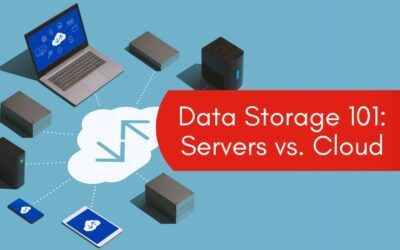How many times have you received the dreaded call – your network is down. In many situations, your IT department doesn’t have the visibility necessary to get ahead of possible performance problems. This means you remain in the dark until a customer or user calls and complains. Once the outage occurs, the clock is ticking. The more time it takes to resolve the problem, the more it will cost you in end-user satisfaction, productivity, and staff time.
Applications, wireless devices, virtual servers, switches, and routers of all types will require 24/7 network monitoring solutions. Making sure that you keep tabs on all this critical network technology means that you can find and fix issues quickly before they have a chance to become more serious.
If you aren’t convinced that network monitoring is necessary or that it provides benefits, keep reading. Here you can learn how this will help to reduce your IT department’s load and make your life easier.
STAY AHEAD OF A POSSIBLE OUTAGE
Do you know what causes most IT outages? While you may want to blame a tech-related issue, like a problem with the network nodes, this isn’t the case. Some of the most common problems include environmental factors, configuration issues, and human error. By implementing network monitoring you can easily prevent these outages from occurring.
With network monitoring, you have the visibility necessary to stay aware of and ahead of any potential issue. When you can see the live network performance data in an easy-to-read and understand interface, you can identify potential outages that may cause bottlenecks.
FIX PROBLEMS FASTER
When your network is down, time is money. With network monitoring, you can easily problem-solve and minimize how long your IT team has to spend trying to figure out what the issue is.
It doesn’t matter if the problem is an abnormal fluctuation in traffic or a configuration error, network monitoring software will help you figure out the cause of the problem easily. A live network map will help you find the origin of the issue, and a status window will provide you with the various performance metrics as time passes.
If you implement network automation tools, you can go a step further. Along with identifying problems with network monitoring, you can fix them automatically, without having to get anyone else involved.
SEE IMMEDIATE ROI
Each day, your IT team is facing a huge workload and projects that are growing in complexity. In many cases, this occurs without the ideal staff, time, or financing that is needed to handle them. The proper network monitoring tool will deliver immediate ROI.
This is all possible without having to look into network performance manually. This allows your staff to focus on more critical projects. Knowing the source of the problem will reduce the amount of time you spend troubleshooting the problem. Also, when you get ahead of the possible IT outages, it will reduce the cost to your organization.
MANAGE THE CHANGING AND GROWING NEEDS OF YOUR NETWORK
With an increase in the use of connected devices and innovative technology, modern IT environments are getting bigger and bigger. At the beginning of 2020, the total number of internet-connected things exceeded the 20 billion mark. While many of these devices are on the consumer side of things, 3.1 billion of all connected things are business-related.
This includes everything you can imagine from cloud technologies and wireless devices to internet-enabled sensors and more. All these devices must be monitored continuously for any suspicious activity or major fluctuations.
Major networks are also growing in their complexity. It doesn’t matter if you are dealing with an IPv6 transition or cloud migrations, you need to make sure you have reliable and flexible tools that help you to monitor all these assets and ensure seamless performance – even as your network grows and changes.
As you can see, when it comes to network monitoring, there is an array of benefits offered. Being informed and knowing what these are is the best way to ensure the desired results are achieved.



